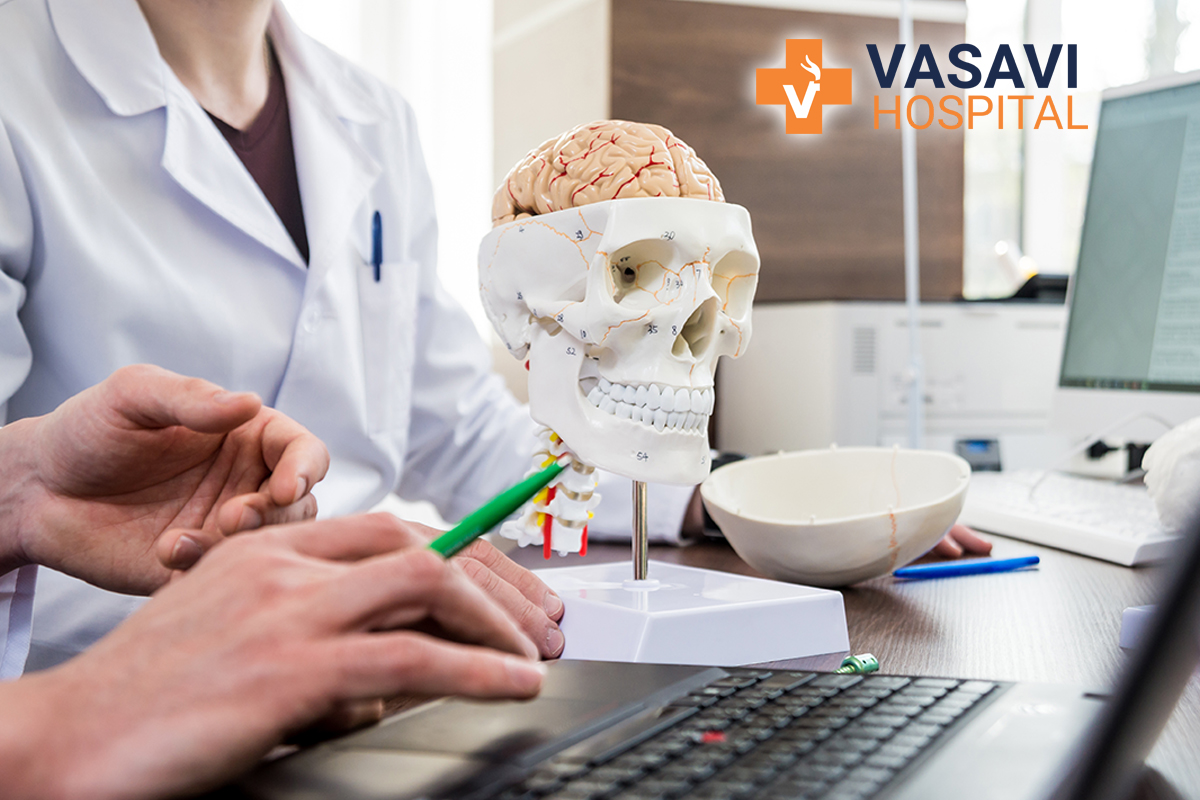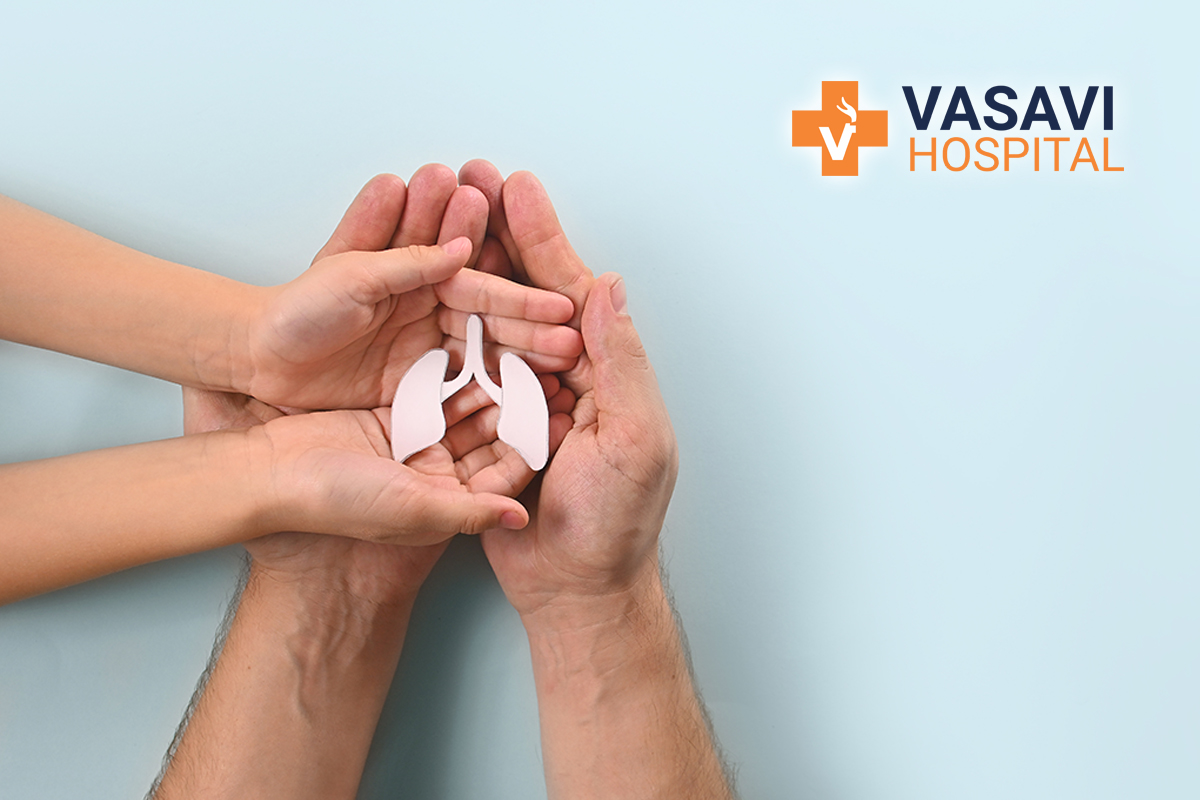
Traumatic Brain and Spinal Cord Injuries
Traumatic Brain and Spinal Cord Injuries
What is a cervical spine injury?
The spinal cord is an extended, cylinder-shaped collection of nerves that stretches from the base of the brain to the back and neck. It is the major channel of communication between the brain and the rest of the body.
A spinal cord injury is an injury to the delicate spinal cord or its surrounding structures.
How prevalent are spinal cord injuries?
According to the World Health Organization, between 2 and 5 lakh persons sustain a spinal cord injury year, mostly due to accidents or trauma. In the general population, a spinal cord injury increases the risk of death by two to five times, making it a major medical issue. The prevalence of spinal cord injuries in India is estimated to be 1.5 million, with a yearly increase of 20,000 cases.
Why do spinal cord injuries occur?
Trauma is the most common cause of spinal injuries.
Vehicular or road accidents
Falls
Violence Sporting accident
Other causes of spinal damage outside trauma include:
Cancers
Arthritis \sInfections
Degeneration of the backbone
Congenital disabilities
Injury during childbirth
Who is susceptible to spinal cord injury?
Whoever is at a greater risk for accident is also at a greater risk for spinal cord injuries.
People with smaller-than-average spinal cords are also more susceptible to spinal cord injury.
Additionally, engaging in dangerous behaviour, being an athlete, and having a bone disease may raise the chance of spinal cord damage.
What forms of spinal cord injuries are there?
Depending on severity
A result of a serious injury that causes total loss of sensation and movement below the injury site.
Incomplete: Injury resulting in partial loss of feeling and movement below the injury site. Depending on the damaged body portion
Tetraplegia is a severe kind of spinal cord injury characterised by the loss of feeling, function, or movement in the head, neck, arms, hands, shoulders, upper chest, or legs, which impairs daily activities.
Loss of sensation, function, or movement in the legs or lower body due to paraplegia. Triplegia is characterised by the loss of sensation and movement in one arm and both legs, and is typically the result of an incomplete spinal cord injury.
The American Spinal Injury Association categorises spinal cord injuries as follows:
ASIA A: A total spinal cord damage with loss of all sensation and movement.
ASIA B: A full spinal cord damage with total paralysis.
ASIA C: An incomplete spinal cord injury with limited mobility preserved and less than fifty percent of the muscles unable to elevate the extremities.
ASIA D: An incomplete spinal cord injury with limited mobility preserved and greater than fifty percent of the muscles unable to elevate extremities.
ASIA E: Normal sensation and movement retained
Spinal concussions are injuries to the spinal cord that cause transient malfunction of the cord. They can be complete or incomplete and are often resolved between 24 and 48 hours. Football players are susceptible to head impacts that result in neck injuries, and as a result, they may sustain spinal concussions frequently.
What are the signs of a damaged spinal cord? Depending on the type, degree, and severity of the injury, the symptoms of a spinal cord injury can be quite diverse. Nonetheless, the following are typical indications of a spinal cord injury:
Loss of motion
Loss of sensation, including the inability to perceive heat, cold, and touch.
Control loss of the bowels or bladder
Excessive muscular contractions or spasms
Variations in sexual function, sensitivity, and fertility
Intense pain or stinging feeling
Breathing difficulties or coughing
Balance concerns
How is a damaged spinal cord diagnosed?
The signs of a spinal cord injury may not be immediately apparent, necessitating rapid medical intervention to diagnose the problem and determine its severity.
Assessing the patient's respiration and pulse rate is the first step in ensuring the patient's stability. Typically, a thorough medical history and physical examination aid in identifying the regions of loss of movement and feeling. Generally, the area of the spinal cord damage is immobilised with medical equipment such as collars.
In addition, a few tests help take photographs of the injury location and validate the situation. They aid in diagnosing, among other things, fractures, anomalies, blood clots, and masses.
The routine evaluations include:
Blood analysis X-ray and CT scan
MRI scan
When to seek emergency medical care
Overall, spinal cord damage is a life-threatening medical emergency that begins at the accident scene. Any head or neck injury necessitates rapid medical treatment to rule out spinal cord injuries. With the use of a neck collar, emergency workers ensure the patient's immobilisation, which is crucial to overall management.
It is crucial to evaluate for spinal cord injury as soon as possible because:
The symptoms may emerge later and aggravate the injury. Damage may get more severe with each passing second, aggravating the harm.
Immediate treatment may lessen the likelihood of a complication and hasten the anticipated recovery.
The hospital's treatment begins with:
Maintaining and stabilisation respiratory and cardiac function
Avoiding shock
Immobilisations
Avoiding problems such as respiratory failure and cardiac damage
How is damage to the spinal cord treated?
The whole treatment plan is contingent upon:
Age, overall health, and medical history are factors in determining medical treatment.
The severity of the spinal cord damage
Spinal cord injury type
The severity of the spinal cord damage
The treatment of spinal cord injuries is aggressive and prolonged. It entails a lengthy period of ICU care, operations, catheterization of the bladder, ventilation, and feeding tubes, among others.
To prevent further harm to the spinal cord, immobilisation of the spine is the initial step of treatment. It is primarily performed by paramedics at the scene of the accident. The vitals, such as respiration and heart condition, are monitored and regulated.
The individual is also evaluated for the likelihood of other injuries and is typically treated in the intensive care unit (ICU). Aligning and supporting the spine with traction or collars. The treatment strategy may also involve the stability of blood pressure, heart function, lung function, and the prevention of infections.
Additionally, surgeries are an essential therapy option for spinal cord injury. It depends on the nature, severity, and extent of the injury. It also determines the potential recovery outcome. Occasionally, surgery may not be able to reverse the damage, but it can prevent the injury from becoming worse.
Generally, follow-ups are incorporated into the treatment plan in order to evaluate progress and prevent problems. Complete spinal cord injuries are less likely to result in functional recovery than incomplete spinal cord injuries. However, it is essential to understand that complete recovery from spinal cord injury is uncommon and frequently accompanied by permanent physical and emotional effects. Moreover, it is known to be lethal.
What problems are associated with spinal cord injury?
Multiple problems are connected with spinal cord injury. Therefore, long-term treatment may be necessary following the repair of the injury. These are only a few:
Urogenital infections
Loss of bladder management
Loss of bowel management
Pressure ulcers owing to long term immobilisation
Pneumonia
Chronic ache
Depression
Lack of skin sensibility
Formation of blood clots
Life-threatening increased blood pressure
Swelling of the limbs
Muscle issues
Influence on sexual health
Tetraplegia totale raises the risk of consequences like pneumonia, pressure ulcers, and blood clots in the extremities.
What function does rehabilitation play in the management of spinal cord injuries?
The rehabilitation process following a spinal cord injury is lengthy and taxing. Early rehabilitation enhances healing and promotes physical and physiological health. The programme often involves a team of healthcare professionals and family members to safeguard the patient's well-being.
Rehabilitation is indispensable for:
Resolving the incident
Pain management
Enhance your physical, mental, and emotional well-being.
Gain muscle power and preserve bone health
Provide instruction about the disease and its treatment
Does exercise aid in the recovery of spinal cord injuries?
Exercise is a component of the rehabilitation process and can aid in the recovery of some lost functions. However, the type and intensity of exercise must be managed in accordance with the physician's orders.
Exercise aids in:
elongate the muscles
Encourage respiration
Gain muscle control and power
Gain from the position
bolster mental health
Reduces the likelihood of persistent pain
Prevent chronic diseases
Among the most commonly suggested exercises are:
Water aerobics Yoga
Rowing \sWalking \sWeightlifting
Sitting aerobics
What initial care is administered to a person suspected of having a back or neck injury?
The general rule is to not move a person suspected of having a spinal cord injury. Any movement increases the likelihood of incurring more injuries and life-threatening consequences. It is essential to support the neck with towels or pillows to prevent movement and contact the hospital immediately.
Can spinal trauma result in paralysis?
Depending on the nature, severity, and severity of the spinal cord damage, paralysis may result.
Can acute damage to the spinal cord be prevented?
To prevent spinal cord injuries, it is crucial to take actions to reduce the likelihood of accidents. Examples include:
Avoid drinking and driving or rash driving
Follow traffic etiquettes and rules
Always use a seat belt while driving and a helmet when riding a motorcycle.
Avoid dangerous movement or activity
Employ safe sporting practises
What are the most recent technologies available to assist people with a history of spinal
cord damage in doing daily tasks?
Injuries to the spinal cord can affect a person's life. With technological advancements, it is feasible to enhance the quality of life and independence of a person with a spinal cord injury. These consist of:
Modern wheelchairs are more manoeuvrable, lightweight, and comfortable.
Voice recognition and user-friendly keyguards are examples of computer adaptations that assist people with restricted hand function.
Electronic daily living aids: These devices are powered by electricity and have remote or voice controls.
Electrical stimulation devices are high-tech goods that use electrical stimulators to regulate hand or leg functions, allowing individuals to regain some capacity to walk, grasp objects, etc.
Robotic gait training: A robotic device used to aid with walking recovery
When can recovery be expected?Given the nature of the damage, it is impossible to estimate the period of recuperation. However, depending on the situation, recuperation might begin anywhere between one week and six months following the accident. However, this can last for at least two years and still have negative results.
What to anticipate and how to deal following a spinal cord injury
A spinal cord injury can have life-altering consequences. It can cause a permanent disability, a lot of surgeries, and a long period of recovery, all of which can be hard on the emotions. Furthermore, it can have a negative impact on daily activities, relationships, and employment. To get better and get used to the new normal, it's important to stay positive and get the best help you can.
Anger, anguish, sadness, and denial are typical emotions among the patient and his or her loved ones. However, it is essential to emphasize that these emotions are a natural response to such a tragic incident. It is essential to embrace these emotions in order to accept the circumstances.
Several coping strategies following spinal cord damage include:
Understanding the condition
Seeking assistance from family and the care team
Finding an assistance group
Consulting a psychologist
Avoiding blame game
Not resorting to destructive coping mechanisms such as alcohol, tobacco, etc.
Taking charge of the environment
Attempting to recover power and autonomy
Understanding more recent developments than can be advantageous
Maintaining relationships with friends and family
Consult a physician about recovering your sexual health.
Motivating oneself to fully experience life



0 comments